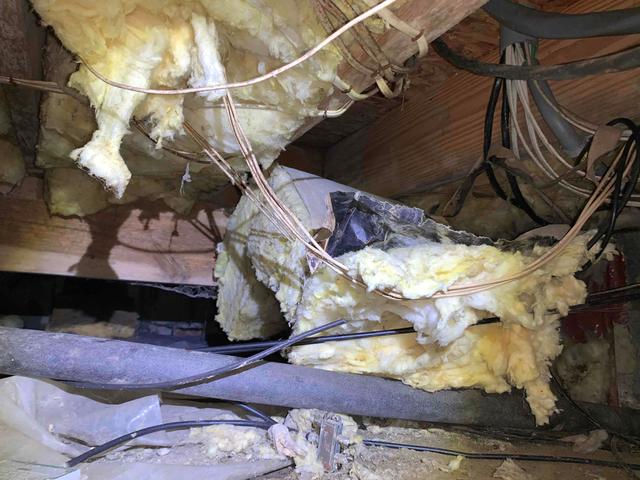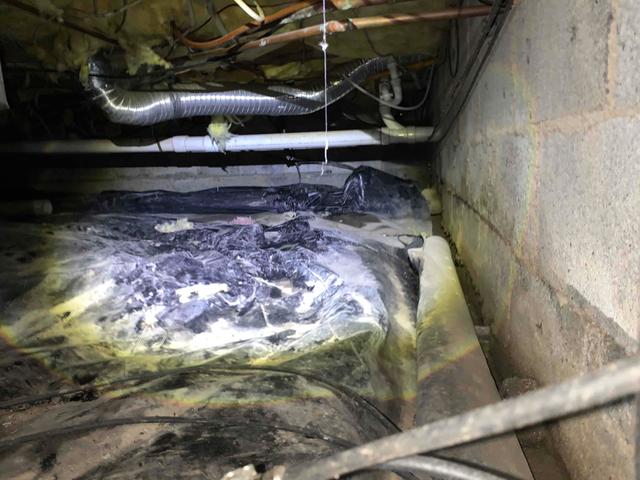
Falling Fiberglass
The fiberglass insulation batts in this crawl space are sagging and falling out of place in the floor joists. They are damp and heavy from soaking up excess moisture in the crawl space. These batts absorb moisture and the water droplets pull apart the fine glass fibers of the insulation. They become too heavy and begin to tear apart and fall out of the floor joists, rendering the batts useless and exposing the subfloor.

Unsealed Vapor Barrier
This 10-mil vapor barrier is not actually providing much protection from the moisture rising out of the earth. There are exposed areas where the vapor barrier was not sealed or mechanically fastened to either the floor or the foundation walls. This exposure allows moisture to become trapped in the crawl space, raising the relative humidity. Small critters and creatures love to make this type of dark and damp environment their home.

Porous Foundation Walls
The cinderblocks of this foundation wall are porous, which means that air and moisture can pass through them. Efflorescence is visible along the walls, which suggests that moisture has forced its way through the cinderblocks, bringing along with it the inner salts and sediments to the surface, creating a chalky, powdery substance on the walls. These walls need to be insulated and sealed to help protect the crawl space from the outside influence.

